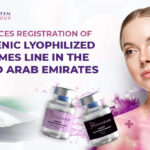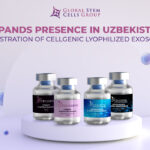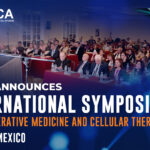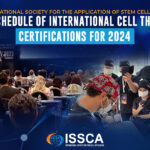Almost all sports medicine doctors would agree that there’s no harm in trying Platelet Rich Plasma Injections (PRP Injections) for their patients. After all, there are hundreds of thousands of cases of positive results. All it needs is research to prove it’s worth. Currently there are many independent researches going on from private funding like the one conducted by Dr. Kimberly G. Harmon M.D., director of the Primary Care Sports Medicine fellowship at University of Washington. She just recently received a gift to support her research from UW alumni who I’m guessing firmly believes in Platelet-Rich Plasma (PRP).
While the process of extracting PRP is fairly simple — there are many variants as long as platelets are above baseline levels with at least seven growth factors — many physician are still unsure about what they can and can’t do when it comes to this marvelous procedure. So today I want to take the time to shine light on the fine print.
Platelet-Rich Plasma Injections Protocol
PRP: Protocols, Technique and Safety Endorsements
Protocol/Technique
Usually, the procedure requires the physician/surgeon and an assistant or two to help with the preparation of graft, the maintenance of sterile technique and saving the ultrasound images (if relevant).
Pre-Procedure Considerations
There should always be a specific indication associated with a physical exam with confirmed imaging studies such as an ultrasound, Cat Scan, or an MRI before treatment.
Proper patient education and a discussion must be had with the patient as well as a signed informed consent prior to the procedure.
Contraindications reviewed prior to procedure.
Graft Preparation
The patient is to positioned in a comfortable seated or reclining position.
Sterile single needles and syringes must be used with proper handling and disposal.
Using an aseptic procedure, the proper amount of blood is then drawn from the vein for the PRP procedure.
If the blood cannot be obtained from the site the first, time a new site must be used to prevent early activation.
Using a sterile technique, transfer the tube of venous blood to the centrifuge. Platelet Rich Plasma should be acquired using a separating device created for autologous blood. Preference is always given to a closed system that will prevent exposure of the blood and its cellular modules to the open air, and permits minimal use of the tissue.
Image Guidance PRP Therapy
Real time imaging guidance using ultrasound CT, or fluoroscopy should always be used when performing a PRP injection.
If ultrasound is going to be used, the subsequent considerations need to be decided on in advance: For lengthy procedures, PRP injections near the spine and intra-articular injections sterile gel is recommended.
Always use sterile probe covers. Cleansing the probe before and after the PRP procedures and observance to sterile technique is sufficient.
Guided images and ineradicable markings of the site of the probe position and the needle entry always needs to be made before cleaning the skin where the probe and needle will be inserted.
Always apply a bandage or a dressing after the procedure to protect the entry site from germs.
Post-Injection
The patient should be monitored for any post PRP procedure complications such as vaso-vagal.
The patients should be given their post procedure directions and precautions and any questions should be answered before they leave, they should also have emergency contact information.
Patients should also be instructed about the immobilization and any post procedure activity that is allowed and/or not allowed.
Post PRP procedure pain prescriptions need to be given to the patient before discharge and any questions they may have about the medication(s) should be answered at this time. The patient also needs to be instructed to avoid NSAIDs till they have healed, are pain free, has full function has returned to the area being treated (or at least to the limited area being treated.
Per OSHA guidelines contaminated areas must be disinfected, before the next patient uses the room (area.)
The PRP procedure must be documented in detail, which includes a procedure note that contains the following information: date, pre and post procedure diagnosis, name of the procedure, physician/surgeon(s), any assistants, whether or not anesthesia was used, and if so what type, short-term indication of the procedure, a description of the graft preparation, a description of the procedure that includes any/all guidance and instruments used.
Platelet-Rich Plasma Injections Protocol
Follow-up
Patients are normally re-examined in 2-6 weeks after the PRP procedure to follow-up on pain, use, the injection site and to discuss any concerns and any future course of action.
The patient response of the treatment should be recorded using authenticated outcome measures.
Any complications responses and all other relevant information should be logged into in the ICMS tracking system.
The consideration for another PRP injection should be the center of the discussion and the patient will be able to make a decision based on the outcome.
Safety
With every medical procedure universal precautions must be used including before, during and after the procedure.
Risk of infection – PRP is antimicrobial and provides effective protection against most bacterial infections except for Klebsiella, Pseudomonas, and Enterococcus.
With the graft being made entirely out of autologous it basically eliminates the apprehension for the transmission of disease unless the graft became contaminated.
Risks to Patient from the Procedure
Infection
Bleeding
Nerve damage
Pain
Lack of result
Loss of limb and death are very rare but possible.
Platelet Rich Plasma: Indications
Musculoskeletal complaints, require a complete history and exam to find a diagnosis. Often times, diagnostic studies may be needed and reviewed to understand why prior treatments failed. PRP is usually considered an optional treatment for chronic and subacute conditions. Commonly, healing slows down or stops all together at the 6-12 weeks’ period following an acute or traumatic injury. If the patient has not had any improvement for over the first six weeks, it’s probable the healing period has stopped.
Platelet-Rich Plasma Injections Protocol
Platelet Rich Plasma: Contraindications
Septicemia
Platelet dysfunction syndrome
Localized infection at the procedure site
Hemodynamic instability
Critical thrombocytopenia
Patient not willing to take the risks involved with the procedure
Relative Contraindications:
Regular use of NSAIDs within 48 hours of the PRP procedure
HGB of < 10 g/dl
Platelet count of < 105/ul
Systemic use of corticosteroids within 2 weeks
Recent illness or fever
Cancer – particularly hematopoietic or of the bone
HGB < 10 g/dl • Platelet count < 105/ul
Corticosteroid injection at treatment site within 1 month
Tobacco use







